Last month, I was speaking at an email marketing seminar for business owners.
During the Q&A, a coach stood up and asked:
“Should I even bother starting email marketing for my coaching business?”
I smiled — because I knew exactly where this was going.
I told them:
“You should. In fact, if you’re not doing it, you’re leaving money and clients on the table.”
Here’s the thing 👇
According to a recent report, 88% of people open their emails.
That’s not just a stat — that’s a massive opportunity for coaches to connect with the right people, build trust, and fill up their calendar without chasing clients on social media all day.
After the seminar, that same coach came to me for help.
We started their email marketing from scratch — no list, no fancy tech, nothing.
Within months, they had a growing list of highly engaged subscribers, and their coaching bookings? They didn’t just grow — they exploded. 🚀
And here’s the exciting part:
In this guide, I’m going to give you the same actionable, practical steps I used for them.
You’ll be able to take these, apply them right now, and start seeing results in your coaching business — even if you’ve never sent a single marketing email before.
By the end, you’ll know exactly:
-
✅ How to set up email marketing from zero without overcomplicating things
-
✅ What kind of emails actually get replies & bookings
-
✅ How to turn your email list into paying clients consistently
Oh, and stick with me till the end — I’ll share a simple growth trick that helped that coach triple their client calls without spending a single rupee on ads. 👀
 Setting Up Your Email Collection System (Your 24/7 Lead Machine)
Setting Up Your Email Collection System (Your 24/7 Lead Machine)
Picture this:
Imagine your email list as a little machine that never sleeps. While you’re eating breakfast, on a walk, or watching Netflix, it’s quietly collecting names of people who want to hear from you. That’s the power of a well-set-up email collection system.
Most people think they have one because they have a newsletter link buried on their website — but that’s like leaving a jar in the corner of a busy street and hoping people drop money in. We’re going to build something far more intentional — a real system that works 24/7.
Step 1: Pick Your Email Marketing Platform
You can’t collect and send emails with Gmail or Outlook — you need a dedicated email marketing tool. Think of it like a virtual assistant that:
-
Stores your subscribers’ information.
-
Sends emails automatically.
-
Tracks who opens, clicks, and engages.
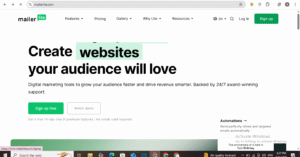
Beginner-friendly options:
-
MailerLite — free for up to 1,000 subscribers. Clean, simple interface. (Use Mailerlite for free Now)
-
ConvertKit — great for creators, free plan up to 1,000 subscribers. (Use Convertkit (Kit) for free Now) MailerLite vs Convertkit
-
Beehiiv — newsletter-focused, simple setup. (Use Beehiiv for free)
- ActiveCampaign – If you seriously want to play game like a Pro. (Use Activecampaign Now)
How to set it up:
-
Visit your chosen platform’s website.
-
Click “Sign Up” or “Get Started.”
-
Fill in your name, business name, and email address.
-
Verify your email (most platforms will send a confirmation link).
-
Create your first list or audience (name it something simple like “Main List” or “Newsletter Subscribers”).
Pro Tip: Use a branded email (like you@yourbusiness.com) instead of Gmail or Yahoo — it builds trust and helps you avoid the spam folder.
Action: Sign up for your chosen platform today. Don’t overthink — you can switch later.
Step 2: Create & Embed Opt-In Forms on Your Website
An opt-in form is a small signup box where visitors give you their name and email in exchange for something valuable (your lead magnet).
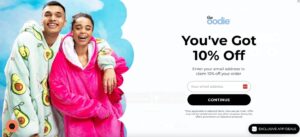
Where to place them:
-
Homepage hero section — the first thing visitors see.
-
Sidebar — always visible while reading.
-
End of blog posts — catch readers when they’ve just enjoyed your content.
-
Pop-ups — triggered after 30 seconds or when someone tries to leave.
How to set one up:
-
In your email tool, click “Forms” or “Signup Forms.”
-
Pick a template — keep it clean, mobile-friendly, and short.
-
Add a headline that clearly states the benefit.
-
Bad: “Sign up for updates.”
-
Good: “Get My 5-Day Beginner’s Yoga Challenge — Free!”
-
-
Keep fields to Name and Email only — the fewer fields, the more signups.
-
Save the form, copy the code your platform gives you.
-
Paste that code into your website (most site builders like WordPress, Squarespace, or Wix have a block/widget for this).
Action: Add at least one opt-in form today.
Step 3: YouTube Email Capture Tactics
If you have a YouTube channel, you’re sitting on an email goldmine. Your videos can be mini billboards for your lead magnet.
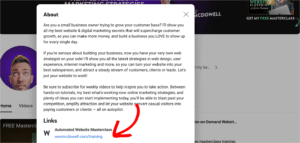
Here’s how to do it:
-
Freebie links in video descriptions: At the top of every video description, add your lead magnet link.
-
Pinned comments: Post a comment on your own video with the freebie link, then pin it so it stays on top.
-
Callouts inside videos:
-
Verbally mention your freebie (“Grab my free checklist, link below!”).
-
Add a pop-up card with the link.
-
-
End screens: Use YouTube’s end screen feature to send viewers to your lead magnet landing page.
Action: Update your top 5 most-viewed videos with your freebie link today.
Step 4: Social Media Profile Optimization
Your social media bios are prime real estate. If you’re not using them to grow your list, you’re missing out.
What to do:
-
Replace your bio link with your lead magnet link (use a tool like Linktree or Beacons if you need multiple links).
-
Rewrite your bio to make the freebie irresistible.
-
Instead of: “Marketing Coach | Helping you grow online”
-
Use: “Helping entrepreneurs grow 📈 | Grab my FREE 30-day content calendar ↓”
-
-
Pin a post or story with your lead magnet link at the top of your profile.
Platforms to do this on: Instagram, LinkedIn, Facebook, TikTok, Twitter/X.
Action: Update all your social bios with your lead magnet link today.
Step 5: Create a Dedicated Landing Page
A landing page is a distraction-free page designed for one purpose: getting someone to sign up. No menus, no random links — just your offer and the signup form.
Basic structure:
-
Headline: Focus on the main benefit.
-
Example: “Turn Instagram Followers into Clients — Free 10-Page Guide.”
-
-
Benefits section: 3–5 bullet points explaining what they’ll get.
-
Opt-in form: Name + Email fields.
-
Thank-you page: A friendly confirmation and next steps.
How to build it:
Most email tools (MailerLite, ConvertKit) have a built-in landing page builder — no extra software needed.
Action: Create your first landing page using your email platform’s builder.
Step 6: Automation for a Seamless Experience
You want subscribers to instantly receive your freebie — without you lifting a finger. That’s where automation comes in.
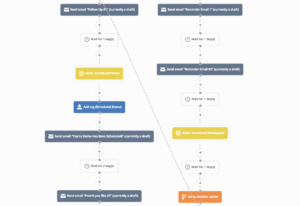
Set it up:
-
In your email tool, go to “Automations” or “Workflows.”
-
Trigger: “When someone joins the list.”
-
Action: Send an email with the lead magnet link.
-
Add a welcome email introducing yourself, explaining what they can expect, and giving a quick win (tip, checklist, video).
Pro Tip: Don’t cram everything into the first email — it’s better to send 3–4 short, friendly emails over the first week to build trust.
Action: Write your welcome email today and connect it to your form or landing page.
 📈Building & Growing a High-Quality Email List (Step-by-Step Growth Plan)
📈Building & Growing a High-Quality Email List (Step-by-Step Growth Plan)
If your email list is the engine of your coaching business, then this section is the fuel injection system.
Forget random “grow your list” advice — here’s a battle-tested, beginner-friendly roadmap that works even if you’re starting from zero and your mom is your only subscriber.
1. 🎯 Pick Your Top 2–3 Traffic Sources
Trying to be everywhere is the fastest route to burnout (and a dead email list).
Instead, focus on 2–3 channels where your ideal clients are already hanging out — and go deep.
For example:
-
Instagram → Great for visual storytelling and quick engagement.
-
YouTube → Long-form authority-building and evergreen lead capture.
-
Guest Podcasts → Instant credibility + targeted audiences.
💡 Mini-Story:
One of my coaching clients picked Instagram + Guest Podcasts only. She stopped worrying about TikTok, and in 90 days, her list grew from 42 subscribers to 1,100 — all from consistent posting + guest appearances.
Action Step:
Pick your 2–3 traffic channels today and commit to showing up there consistently for 90 days.
2. 🎁 Create an Irresistible Lead Magnet
Think of your lead magnet as the “entry ticket” to your world. It must be so valuable people feel guilty getting it for free.
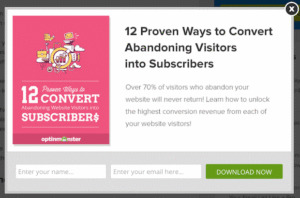
Tailor it to your niche:
-
Business Coach → “10 Plug-and-Play LinkedIn Post Templates”
-
Fitness Coach → “7-Day Home Workout Plan”
-
Life Coach → “Mindset Reset Guide for Stress-Free Mornings”
📌 Pro Tip:
Use Canva or Google Docs to create a polished PDF in under 2 hours. Don’t wait weeks for perfection — speed wins.
Action Step:
Block 1–2 hours today to draft and design your lead magnet. Done is better than perfect.
3. 🔗 Deploy Opt-In Links Everywhere
Here’s where most coaches fail — they hide their opt-in form like a treasure map.
Your opt-in link should be impossible to miss.
Places to add it right now:
-
Your website banner & footer
-
Blog post CTAs
-
YouTube video descriptions
-
Instagram & LinkedIn bios
💡 Mini-Story:
I added a lead magnet link to my Instagram bio and doubled my daily subscribers in 72 hours — without posting more content.
Action Step:
Add your opt-in link to at least 3 high-traffic spots today.
4. 🎤 Leverage Webinars & Free Workshops
Live events = trust-building on steroids.
A 30–45 minute workshop lets people see your expertise in action — and requiring an email to register means list growth on autopilot.
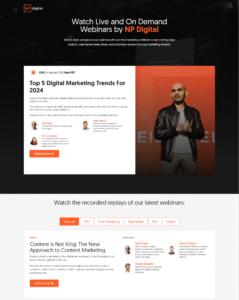
Promotion Ideas:
-
Post countdowns on Instagram stories.
-
Partner with another coach to co-host.
-
Share inside niche Facebook groups (where allowed).
Action Step:
Pick a topic your audience struggles with most and schedule your first free workshop for next month. Create a simple sign-up page using ConvertKit, MailerLite, or even Google Forms.
5. 🤝 Partner for List Growth
Collaboration beats competition. Partner with coaches who share your audience but don’t compete with you directly.
Ideas:
-
Swap freebies — they share yours, you share theirs.
-
Do a guest training inside their paid community.
-
Exchange newsletter mentions.
💡 Mini-Story:
A life coach I worked with partnered with a nutrition coach. They swapped lead magnets, and both added 500+ subscribers in just 14 days.
Action Step:
Make a list of 5 potential partners this week and send them a short, friendly DM/email.
6. 📊 Track & Optimize
If you’re not tracking, you’re guessing.
Every Monday, check:
-
Which traffic sources brought the most sign-ups?
-
Which lead magnet converts best?
-
Which sign-ups turn into paying clients?
💡 Why this matters:
Sometimes your “highest volume” source sends the lowest quality leads. You want the opposite — fewer, better-qualified subscribers.
Action Step:
Set a weekly 15-minute “list health check” reminder in your calendar starting this Monday.
✅ Bottom Line:
Growing a high-quality email list is NOT about chasing big numbers.
It’s about building a small, loyal audience who actually wants to hear from you — and eventually pay for your expertise.
Follow these steps consistently for 90 days, and you’ll have a list that actually converts, not just collects dust.
 📢 Boosting Engagement — Keeping Subscribers Hooked
📢 Boosting Engagement — Keeping Subscribers Hooked
So, you’ve got people on your list. 🎉
Now the real question: How do you keep them engaged, opening your emails, and actually looking forward to hearing from you?
Think of it like dating. Getting the phone number is just step one. If you never call, or you keep talking about yourself with zero interest in them… well, let’s just say you’ll be ghosted. 😬
Let’s make sure that never happens to your subscribers.
1. 🤗 Send a Welcome Sequence That Builds Trust
Your welcome sequence is your first impression — and you never get a second chance at that.
Here’s a simple 3-email sequence that works for almost any coaching business:
-
Day 1: Share your story + deliver the promised freebie.
Don’t just say “Hey, here’s your PDF.” Tell them why you do what you do. People connect with people, not faceless brands.
Example: “Five years ago, I was burned out, underpaid, and wondering if coaching was for me… until I discovered [key turning point].” -
Day 3: Give them a quick win tip they can apply immediately.
This isn’t about selling — it’s about proving you can deliver results.
Example: “Here’s one mindset shift my clients say changed their business overnight.” -
Day 5: Share a client success story that mirrors your subscriber’s struggles.
Show them transformation is possible. Use specifics: “Maria went from $2K/month to $8K/month in 60 days…”
Action Step: Draft these 3 emails today in Google Docs or your email platform. The faster they’re ready, the sooner you’ll be turning strangers into fans.
Welcome Sequence That Builds Trust (Copy-Paste Templates)
Email 1 – Story + Freebie Delivery (Day 1)
Subject: “Welcome — and here’s the [Freebie Name] I promised 🎁”
Hi [First Name],
I’m so glad you’re here! Before we dive in, here’s your [Freebie Name]:
👉 [Download Link]Now, a quick story…
Five years ago, I was [describe relatable struggle — e.g., “burned out, underpaid, and wondering if coaching was even for me”].
Everything changed when I discovered [key turning point or insight]. That shift not only transformed my business — it gave me the freedom to [insert desirable outcome your audience wants].
That’s why I created [Freebie Name] — so you can take the first step toward the same transformation.
You’re now part of a community that’s all about [insert your mission/promise]. Over the next few days, I’ll be sharing tips and stories that will help you get there faster.
Talk soon,
[Your Name]
Email 2 – Quick Win Tip (Day 3)
Subject: “Try this today — my clients swear by it ✅”
Hi [First Name],
I want to give you something you can use right now to see results.
Here’s a quick, proven tip my clients love:
[Insert one simple, specific action — e.g., “The 10-minute daily journaling routine that reprograms your mindset for success”].Why it works: [Explain briefly in 2–3 sentences. Keep it practical, not fluffy.]
If you try it today, you’ll notice [specific benefit, e.g., “more clarity, less stress, and a stronger sense of control over your week”].
Hit reply and let me know how it works for you — I personally read every message.
You’ve got this,
[Your Name]
Email 3 – Client Success Story (Day 5)
Subject: “How Maria went from $2K to $8K/month in 60 days 🚀”
Hi [First Name],
I want to introduce you to Maria, a client who was once exactly where you might be now.
When Maria first came to me, she was [describe pain point — e.g., “working 12-hour days and barely covering her bills”].
Here’s what we did together:
[Step 1 — e.g., “Streamlined her offer so she could charge what she was worth.”]
[Step 2 — e.g., “Created a simple email funnel to nurture leads automatically.”]
[Step 3 — e.g., “Set boundaries so she could actually enjoy her weekends again.”]
The result? Within 60 days, Maria’s revenue jumped from $2K/month to $8K/month — and she now works fewer hours than ever.
The truth is, Maria isn’t special — she’s just like you. The only difference is she decided to take action.
If you’re ready for your own transformation, I’d love to help. Here’s the link to book your free strategy call:
👉 [Booking Link]Talk soon,
[Your Name]
2. 🗓 Find Your Email Frequency Sweet Spot
Too few emails and people forget who you are.
Too many and they feel spammed.
Start with 1–2 emails per week — this is a proven sweet spot for most coaches. (Best Time and Day to Send Emails (Backed by Data, Not Guesswork) )
After 4–6 weeks, check your open rates and unsubscribe rates:
-
If opens are high and unsubscribes low → you can increase frequency.
-
If opens are dropping and unsubscribes are rising → dial it back.
Think of it like a fitness plan: you wouldn’t start with 2 hours of daily workouts if you’re new to the gym. You build up over time.
3. 🎯 Mix Content Types That Resonate
If every email you send is a pitch, subscribers will start ignoring you.
If every email is pure value, they’ll love you but may never buy.
The secret? Content variety.
Here are four high-performing types:
-
Quick tips: A short, punchy piece of advice they can use right away.
-
Behind-the-scenes: Share your own struggles, processes, or daily routines.
-
Myth-busting: Challenge industry misconceptions they’ve believed for years.
-
Exclusive offers: Give subscribers something they can’t get anywhere else.
Action Step: Open a spreadsheet, list these four types, and plan your next 4 weeks of topics right now.
4. 🔍 Segment for Personalization
Not every subscriber is the same — treat them like individuals, not email addresses.
For example:
If you’re a business coach, you might tag subscribers who click on “Mindset” articles separately from those who click on “Marketing” content.
Why? Because personalization skyrockets engagement.
When you send mindset tips to people who love mindset tips, your open rates can double.
Action Step: Go into your email platform today and add 2–3 interest tags based on your main topics.
5. 📣 Use Interactive Elements
Email isn’t a one-way street. The more people engage with your emails, the more your emails get prioritized in their inbox by Gmail, Outlook, etc.
Easy ways to add interaction:
-
Polls: “Which of these is your #1 struggle?”
-
Surveys: Quick Google Form or Typeform links.
-
Reply prompts: “Hit reply and tell me your biggest challenge this week.”
These small asks not only improve deliverability but also help you learn what your audience actually wants from you.
Action Step: Add at least one interactive element to your next email.
💡 Pro Tip:
Think of your email list like a community. If they feel seen, heard, and understood, they’ll not only stay — they’ll look forward to your emails.
 Writing Emails That Convert Subscribers into Clients 🚀
Writing Emails That Convert Subscribers into Clients 🚀
Most coaches fail at email marketing not because they don’t send enough emails… but because they send the wrong emails.
Think of your subscriber’s inbox like a busy coffee shop — dozens of voices competing for attention.
Your job? Be the one person who tells the most interesting, relevant, and actionable story that naturally leads them to work with you.
Here’s how to do it, step-by-step.
1. Craft Irresistible Subject Lines ✉️
Your subject line is the gatekeeper to your email. If it fails, your perfectly written email will never be read.
The secret is combining curiosity + benefit + urgency — just like a good Netflix title that makes you click.
Examples:
-
Curiosity: “The coaching mistake you don’t know you’re making…” (They want to know what it is.)
-
Urgency: “Closes tonight: Your last chance to join” (Fear of missing out.)
-
Benefit: “3 habits to double your coaching income” (Clear gain for them.)
💡 Pro Tip:
Subject lines under 50 characters tend to get more opens, especially on mobile.
Also, avoid spam-trigger words like “FREE!!!” or “$$$” — they kill deliverability.
✅ Action Step:
Right now, open a doc and brainstorm 10 subject lines for your next email.
Pick the top 2 and A/B test them with a segment of your list to see what performs best.
2. Follow the Story → Solution → Offer Formula 📖
If your email feels like a pushy sales pitch, people will unsubscribe. But if you tell them a story that leads to your offer, it feels natural and valuable.
Here’s the breakdown:
-
Story: Share something relatable — a client’s struggle, your own journey, or an industry myth. Example: “When Sarah first came to me, she was spending 10 hours a week creating Instagram content but still wasn’t booking clients…”
-
Solution: Reveal the strategy or tip that solved the problem. Example: “We switched her focus to email marketing, creating a single weekly newsletter that brought in 3x more client calls.”
-
Offer: Invite them to take the next step. Example: “I have 2 coaching spots open this month. Click here to book your free strategy session.”
💡 Pro Tip:
The “Offer” doesn’t always have to be paid — it could be a free call, free download, or webinar. The point is to keep them moving forward in your funnel.
✅ Action Step:
Take your last email and reframe it into Story → Solution → Offer format. Send it to a test segment and compare click-through rates.
3. Write a Clear, Single-Action CTA 🎯
One of the biggest conversion killers is giving people too many options.
The brain hates decision overload. If you say, “Check my blog, follow my Instagram, book a call,” they’ll do none.
Instead, have one clear CTA per email and make it impossible to miss.
-
❌ Weak: “Check out my blog and Instagram.”
-
✅ Strong: “Book your free 15-minute strategy call today.”
Formatting Tip:
Use a big button or a bold link. Repeat it twice — once in the middle of the email, once at the end.
✅ Action Step:
Go to your next scheduled email and remove all but one CTA.
Highlight it visually so it stands out on mobile.
4. Personalize Without Being Creepy 🤝
Personalization isn’t just “Hey [First Name]” — that’s the bare minimum.
You want to make your reader feel like you’re speaking directly to them.
Here’s how:
-
Mention past engagement: “You loved my last email about productivity hacks…”
-
Refer to their goals: “Since you mentioned wanting to sign 3 more clients this month…”
-
Send content based on interest tags (e.g., mindset coaching vs. business strategy).
⚠️ Avoid overdoing it. Saying “I noticed you clicked this link 4 times” is creepy and kills trust.
✅ Action Step:
Go into your email tool today and create 2–3 interest tags (e.g., “Mindset,” “Business Growth,” “Sales Skills”). Tag your subscribers accordingly over the next month.
5. Plug-and-Play Email Templates for Coaches 📋
Instead of writing from scratch, start with proven templates and customize them for your niche.
A) Welcome Email Template
-
Greet them warmly and introduce yourself.
-
Deliver the freebie or promised resource.
-
Tell them what to expect (e.g., “Every Monday, you’ll get a new client growth tip.”).
B) Value Email Template
-
Share a quick win tip or insight.
-
Add a mini success story for credibility.
-
Link to a deeper resource (blog, video, or free call).
C) Sales Email Template
-
Identify a specific pain point.
-
Show how your offer solves it.
-
Add urgency (limited spots, deadline, bonus).
💡 Pro Tip:
Keep a swipe file in Google Docs with your best-performing emails so you can reuse and adapt them quickly.
✅ Action Step:
Customize the 3 templates above for your coaching business today. Schedule them in your autoresponder.
 Case Studies — Real Coaches Who Used Email to Grow Their Business
Case Studies — Real Coaches Who Used Email to Grow Their Business
Case Study 1 — Business Coach: Emily from the USA
Emily had always dreamed of scaling her business coaching programs online. She was posting consistently on Instagram, engaging with followers, and sharing tips — but her email list barely moved beyond 200 subscribers. Every time she launched a course, she felt anxious: the few sign-ups barely covered her marketing costs. Emily knew email marketing could be the game-changer, but she didn’t know how to start or structure it.
When Emily approached our agency, we immediately mapped out a plan. We decided to focus on a laser-targeted lead magnet that would attract exactly her ideal clients. We created:
“10 Proven LinkedIn Post Templates to Attract Clients in 7 Days.”
Next, we built a 24/7 lead capture system. Opt-in forms went on her website homepage, blog posts, Instagram bio, and even YouTube descriptions. But that was just the beginning. We also developed a 3-email welcome sequence:
-
Day 1: Emily shared her story and delivered the free templates
-
Day 3: A quick, actionable tip her subscribers could implement immediately
-
Day 5: A client success story showing that transformation was possible
To warm up her audience before the launch, we sent a two-week value email series, providing tips, insights, and micro-case studies to keep readers engaged and ready.
The result? In just three months, Emily’s email list exploded from 200 to 1,500 subscribers. When she launched her 6-week coaching program, the email list alone generated $15,000 in revenue. Her engagement skyrocketed with 48% open rates and 12% click-through rates. Most importantly, she now had a scalable, repeatable email system she could rely on for every launch.
Case Study 2 — Fitness Coach: Liam from the UK
Liam was a personal trainer in the UK with a loyal Instagram following, but he wanted to expand online. He shared workouts, tips, and videos, yet very few followers converted into paying clients. He realized that people loved the content but didn’t know how to trust him enough to pay for a program.
Our agency stepped in and designed a strategy focused on trust-building and consistent value. First, we created a 7-Day Home Workout Plan, an easy-to-follow guide for beginners that required no equipment. Then, we implemented weekly “Quick Tip Friday” emails, where subscribers received actionable workouts every week.
To keep engagement high, we added monthly progress surveys, asking subscribers to share results. This not only built trust but gave Liam valuable insights into what worked. Each email ended with a soft CTA: “Want a custom plan? Book a free consultation.”
The results were immediate. Within two months, open rates averaged 45%, subscribers started replying and sharing progress, and Liam’s online personal training bookings doubled — all without spending a penny on ads. His email system became a powerful, automated lead-nurturing machine that worked while he focused on coaching.
Case Study 3 — Life Coach: Sophia from Canada
Sophia, a life coach in Canada, was preparing to launch her high-ticket 1:1 coaching program. She had tried launching before, but results were disappointing. Her emails felt generic, engagement was low, and prospects were hesitant to join without seeing proof of results. She needed a strategy that connected emotionally and drove action.
We created a 5-day storytelling email sequence that led readers from her personal struggle to small wins, and finally to her offer. Each day had an emotional hook:
-
Day 1: Sophia shared her story — the struggles, doubts, and fears she overcame
-
Day 2–4: Highlighted client transformations and relatable scenarios
-
Day 5: Strong CTA with urgency — “Only 5 spots available, doors close in 48 hours.”
We also segmented her email list based on engagement, targeting the most interested subscribers first. Social media was used to drive traffic to the email sign-up, teasing the upcoming launch.
The outcome? 80% of program spots were filled before the public launch. Email open rates reached 52%, click-through rates 18%, and engagement was at an all-time high. Sophia walked away with a proven, high-converting launch system she could replicate for future programs.
 Conclusion — Your First Step to Email Marketing Success
Conclusion — Your First Step to Email Marketing Success
If there’s one thing these case studies prove, it’s simple: email marketing is the fastest, most reliable way to grow your coaching business. From Emily in the US to Liam in the UK and Sophia in Canada, the story is the same — with the right system, your email list can go from a few hundred subscribers to a fully engaged audience that actually buys your programs.
Here’s your first actionable step you can take today:
Pick one traffic source — Instagram, YouTube, or your website — and create a small, irresistible lead magnet. It doesn’t have to be perfect. Deliver value, capture emails, and start building your 24/7 client-generating system.
💡 Soft Pitch:
If building, automating, and optimizing all of this feels overwhelming, don’t worry. That’s exactly what we do. Our agency builds high-converting email systems for coaches, so you can focus on what you do best — coaching your clients.
📅 Book your free strategy call here and let’s craft your email system together.
Email marketing for Coaches – FAQs
Q.1 – What is the best email marketing platform for coaches?
It depends on your needs:
-
MailerLite – Best free option, beginner-friendly
-
ConvertKit – Great for automations and audience segmentation
-
ActiveCampaign – Advanced features for scaling programs
-
AWeber – Simple, reliable, easy to start
Q.2 – How often should I email my coaching list?
Start with 1–2 emails per week, track engagement, then adjust. Consistency beats frequency.
Q.3 – How do I grow my email list fast?
Use lead magnets like guides, templates, or checklists. Share links on your website, social media, and YouTube. MailerLite or ConvertKit make capturing emails easy.
Q.4: What types of lead magnets work best for coaches?
-
Business coaches: LinkedIn templates, content guides
-
Fitness coaches: Workout plans, nutrition checklists
-
Life coaches: Mindset reset guides, reflection worksheets
Q 5: How do I write emails that convert clients?
Use story + value + call-to-action. Start with a personal story, provide tips, then invite them to your program. ConvertKit or ActiveCampaign help automate this sequence.
Q 6: Can I automate my coaching sales funnel?
Yes! Tools like MailerLite, ConvertKit, or ActiveCampaign let you automate lead capture, nurture emails, and sales sequences — so you focus on coaching, not chasing leads.

